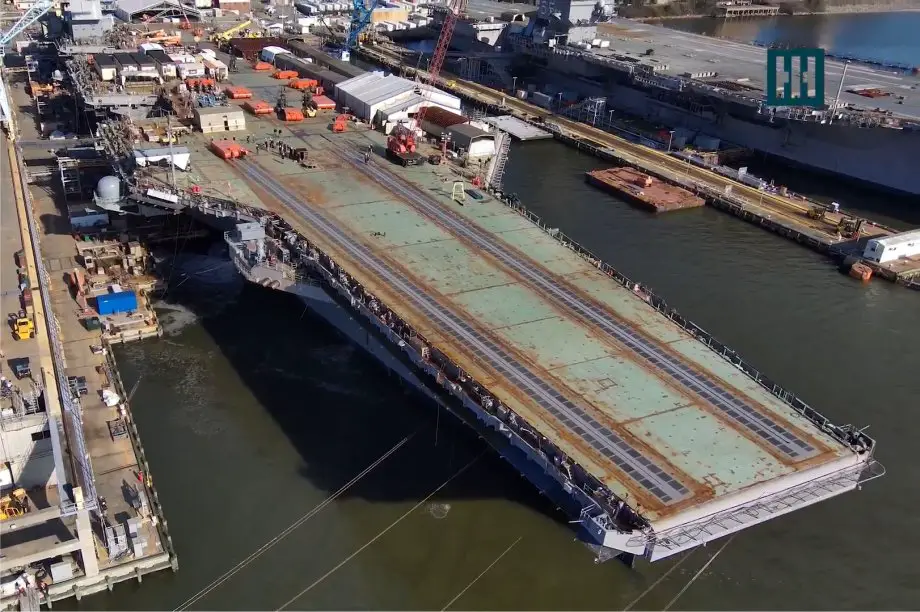According to a PR published by HII on February 21, 2024, the US company started topside testing of the electromagnetic aircraft launch system (EMALS) on the aircraft carrier John F. Kennedy (CVN 79).
Follow Navy Recognition on Google News at this link
 Gerald R. Ford-class aircraft carrier USS John F. Kennedy. (Picture source: HII)
Gerald R. Ford-class aircraft carrier USS John F. Kennedy. (Picture source: HII)
This system, which was first used on USS Gerald R. Ford (CVN 78), is set to replace the steam catapults used on the U.S. Navy's Nimitz-class carriers. The testing began with "no-load" trials on the first two catapults, referred to as 'bow cats,' and has progressed to "dead-load" testing.
This phase involves launching weighted sleds, simulating the mass of aircraft, into the James River to verify the system's readiness for operational use. These tests are crucial for ensuring the catapults can launch all types of carrier-based fixed-wing aircraft in the Navy's fleet.
The John F. Kennedy is the second of the Gerald R. Ford-class aircraft carriers being built by Newport News Shipbuilding, the only U.S. facility that designs, builds, and refuels nuclear-powered aircraft carriers. Alongside Kennedy, the Enterprise (CVN 80) and Doris Miller (CVN 81) are also under construction.
EMALS
Developed by General Atomics for the United States Navy, EMALS uses a linear induction motor to launch aircraft, providing a smoother acceleration and the ability to handle a broader range of aircraft weights.
One of the primary advantages of EMALS is its increased reliability and efficiency compared to steam catapults. It requires less maintenance and manpower, occupies less space, and uses less energy, while also being capable of recharging quicker.
The absence of steam in its operation makes it suitable for the Navy's future all-electric ships. EMALS also offers more precise control over the launch performance, allowing it to launch various types of aircraft, from heavy fighter jets to light unmanned vehicles. Its system can deliver 29% more energy than steam catapults, with a planned 90% power conversion efficiency, making it significantly more efficient.
The system's flexible architecture allows it to be adapted for different platforms, and it significantly reduces the topside weight and installed volume on carriers. It also has a reduced thermal signature and offers advanced diagnostics for easier maintenance.
Moreover, EMALS is expected to improve the lifespan of aircraft it launches due to its more accurate end-speed control and smoother acceleration, which puts less stress on the airframes.



